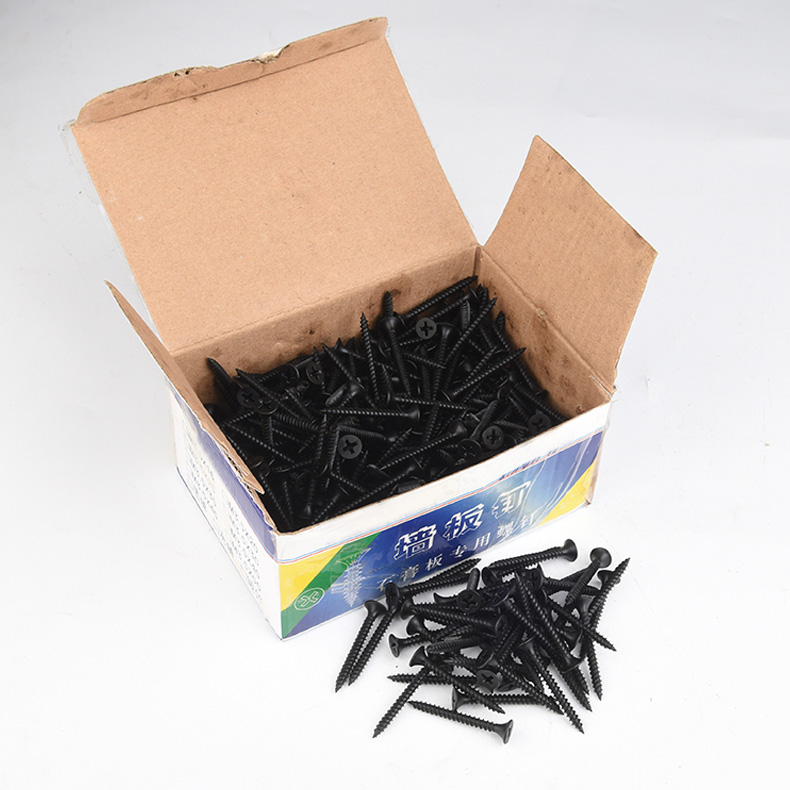Drywall screws are specifically designed to secure drywall — a type of paneling used to create walls and ceilings in buildings — to the wooden or metal studs behind it. They are a crucial component of the drywall installation process.

Design and Structure
Here are the key design features of drywall screws:
- Head: Drywall screws have a bugle head that is curved below the driving surface, designed to prevent tearing the paper surface of drywall panels.
- Thread: Drywall screws feature a very sharp point and aggressive threads. There are two main types of thread: fine threads, intended for attaching drywall to metal studs, and coarse threads, designed for attaching drywall to wood studs.
- Material: These screws are generally made from steel and come in a variety of lengths to accommodate different thicknesses of drywall.
- Phosphate Coating: Most drywall screws have a black phosphate coating, which helps to reduce rust and provides a surface that encourages the joint compound (used to cover the screw heads and seams) to adhere.
Uses and Applications
- Installing Drywall: The primary application for drywall screws is to secure drywall to the wooden or metal studs in walls and ceilings.
- Plasterboard Installation: Similar to drywall installation, these screws can also be used to fasten plasterboard.
- Woodworking Projects: Though not their primary purpose, drywall screws are often used in woodworking because of their strength, availability, and ease of use.
- Repair Works: They can also be used for various repair tasks, such as mending furniture or securing loose parts.
Despite their versatility, it’s important to note that drywall screws are not suitable for applications that require exposure to moisture or outdoor conditions, as they can rust over time. For outdoor applications or in moist conditions, it’s better to use screws specifically designed for those environments.
When using drywall screws, it’s also important to ensure the screw is driven so that the head is slightly below the surface of the drywall, but without breaking the paper. This allows the screw head to be covered with joint compound and sanded smooth to create a seamless surface.